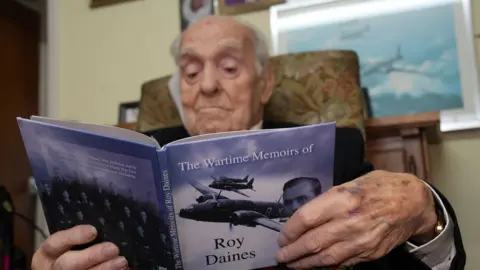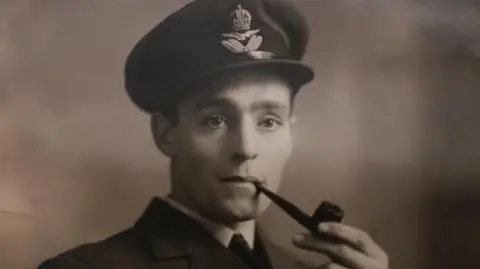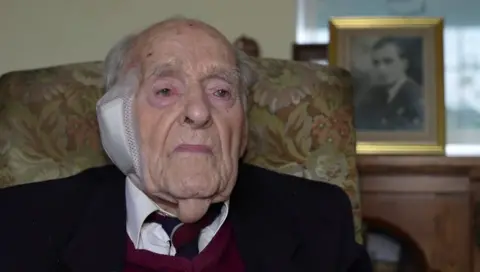Veteran who saw flattened Hiroshima turns 102
 John Fairhall/BBC
John Fairhall/BBCAn RAF veteran who was one of the first British personnel to witness a flattened Hiroshima and survived two crash landings is marking his 102nd birthday.
Roy Daines, from Essex, first volunteered for the air force aged 18 in 1941, where he served as a wireless operator and air gunner in Wellington Bombers during World War Two.
He carried out more than 30 missions as part of a special duties squadron.
As he reaches another landmark year, he still lives independently and enjoys carrying out all of his own cooking, cleaning, laundry and gardening.
'Hiroshima was just flat'
Eighty years since the end of World War Two, Mr Daines recalled seeing the aftermath of the atomic bomb explosion at Hiroshima by the US, when he was stationed in Japan after the war.
"Hiroshima was just flat, it was absolutely devastated, there was nothing there," he said.
"It was rather eerie because the roads - I suppose from the explosion – had all become up and down hillocks, the bridge had got no size because they'd been blasted… there was one building and that was a huge great block, and they say it had moved on its foundations."
He added: "You could look two to three miles right across the city.
"In Japan, they used to bury their dead up on the mountain, up on the hills, so that they faced the rising sun, and you could see that far."
 Contributed
ContributedMr Daines served in the 192 squadron as part of the 100 group Bomber Command. Their operations were top secret.
"Funnily enough when you don't know what you're doing, you just do it," he said.
"You get in this aircraft in the dark, you fly somewhere. You don't know where you're flying to.
"It's very boring. I mean, most of our trips were ten and eleven-hour times - remembering you're sitting in a small cabin with just a light.
"It's not very warm... and you've got canvas on these aircraft... you've got three pairs of gloves, of course woolly boots to keep your feet warm, two or three pullovers, and just hope for the best."

After his tour of duty he became a radio instructor and then re-trained to become a "code and cypher" officer decoding enemy messages.
He was eventually shipped out to India, Singapore and finally to Hiroshima.
After the war, he continued his profession as a precision engineer making tools and operating lathes, mills and grinders.
He eventually retired at 94 years old.
And on Saturday he spoke live with presenter Sadie Nine on BBC Essex as he celebrated his 102nd birthday and recalled his missions with 192 squadron.
Follow Essex news on BBC Sounds, Facebook, Instagram and X.
